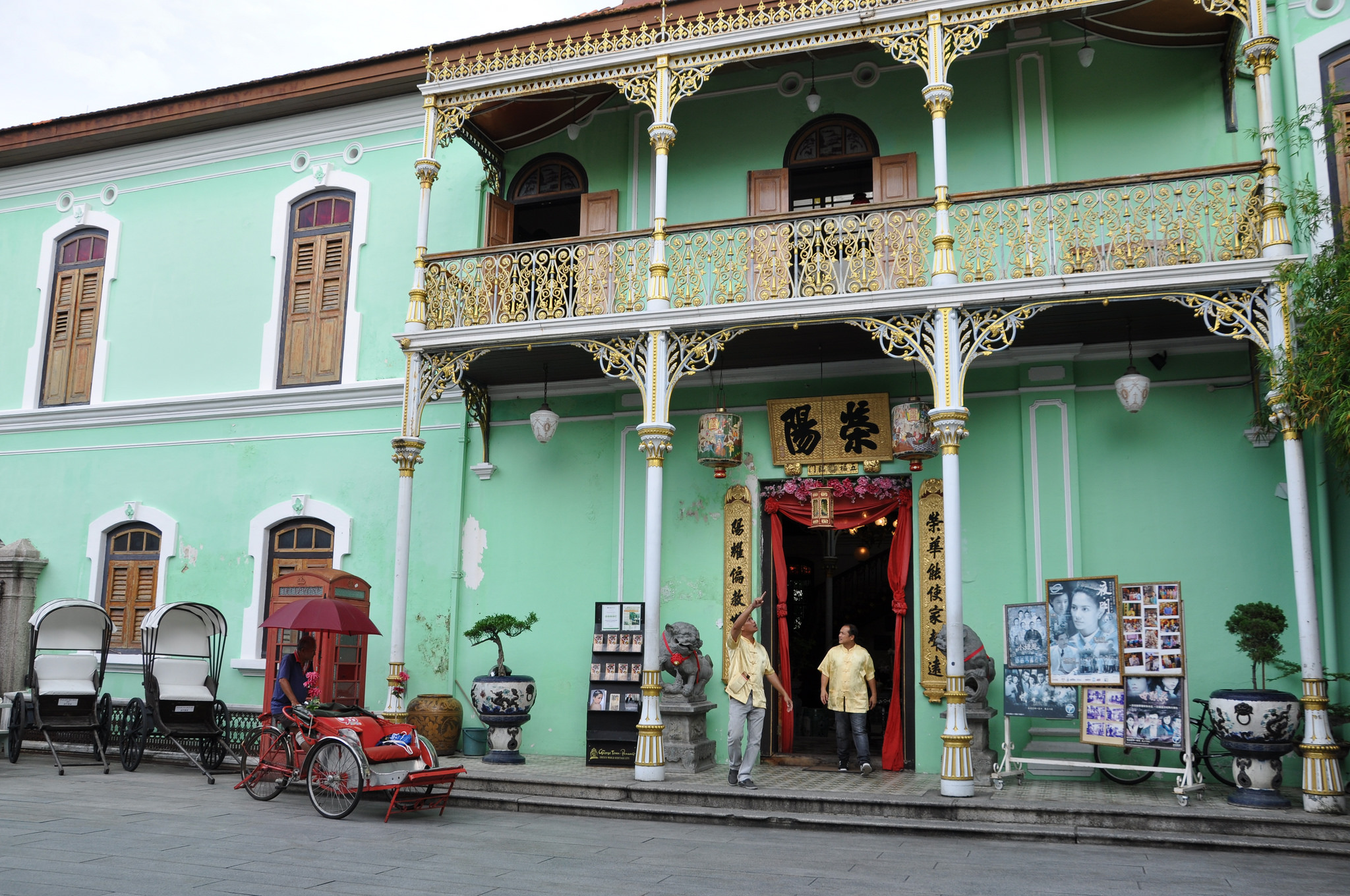
A visit to the Green Mansion is a great way to step back into the life of the affluent, Straits-born Chinese who made George Town their home. Museum director Lillian Tong takes us back in time to discover more about these interesting people and the new culture they carved out for themselves.
The Pinang Peranakan Mansion, swathed in a magnificent shade of jade that has given rise to the moniker “The Green Mansion”, is a gem set in the middle of George Town’s UNESCO World Heritage Site. Just by stepping inside, visitors are transported back to the gilded and charmed life of the wealthy family that once lived there, and it is a great way to understand the history of the Peranakan culture and its long association with the Malay Archipelago.
The arrival of the Chinese
The Chinese arrived in the Malay Peninsula and Archipelago as early as the Han Dynasty 206 BC-AD220. The Straits of Malacca – as the gateway to the West, the Persian Gulf, and the Roman Empire – offered an alternative to the overland “Silk Route”.
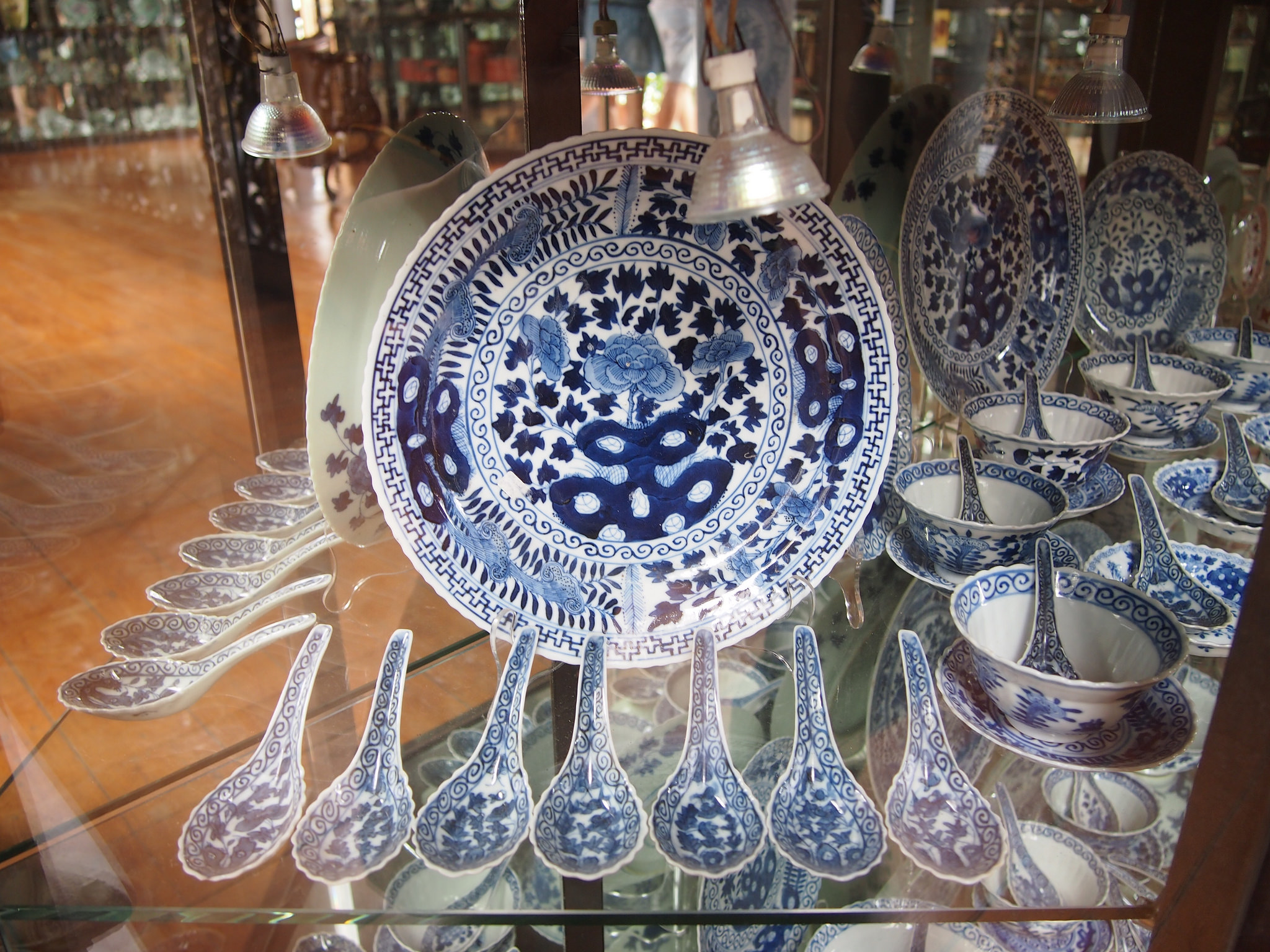
Merchant ships set sail from Southern China laden with treasures of Chinese tea, exquisite silk, and porcelain, and these early Chinese seafarers stopped by Melaka and other ports in the Malay Archipelago for trade and supplies, while waiting for the winds to change to speed them off to India, Europe, or home.
From these ports, the Chinese merchants established businesses and fanned out to settle in the areas around it. The seafarers, all male and without accompanying Chinese women, intermarried with the Siamese and Burmese women living in these ports, as well as with local Malay women of Acehnese, Javanese, Balinese, and Batak descent, and became the Peranakan people.
Peranakan Culture and Customs
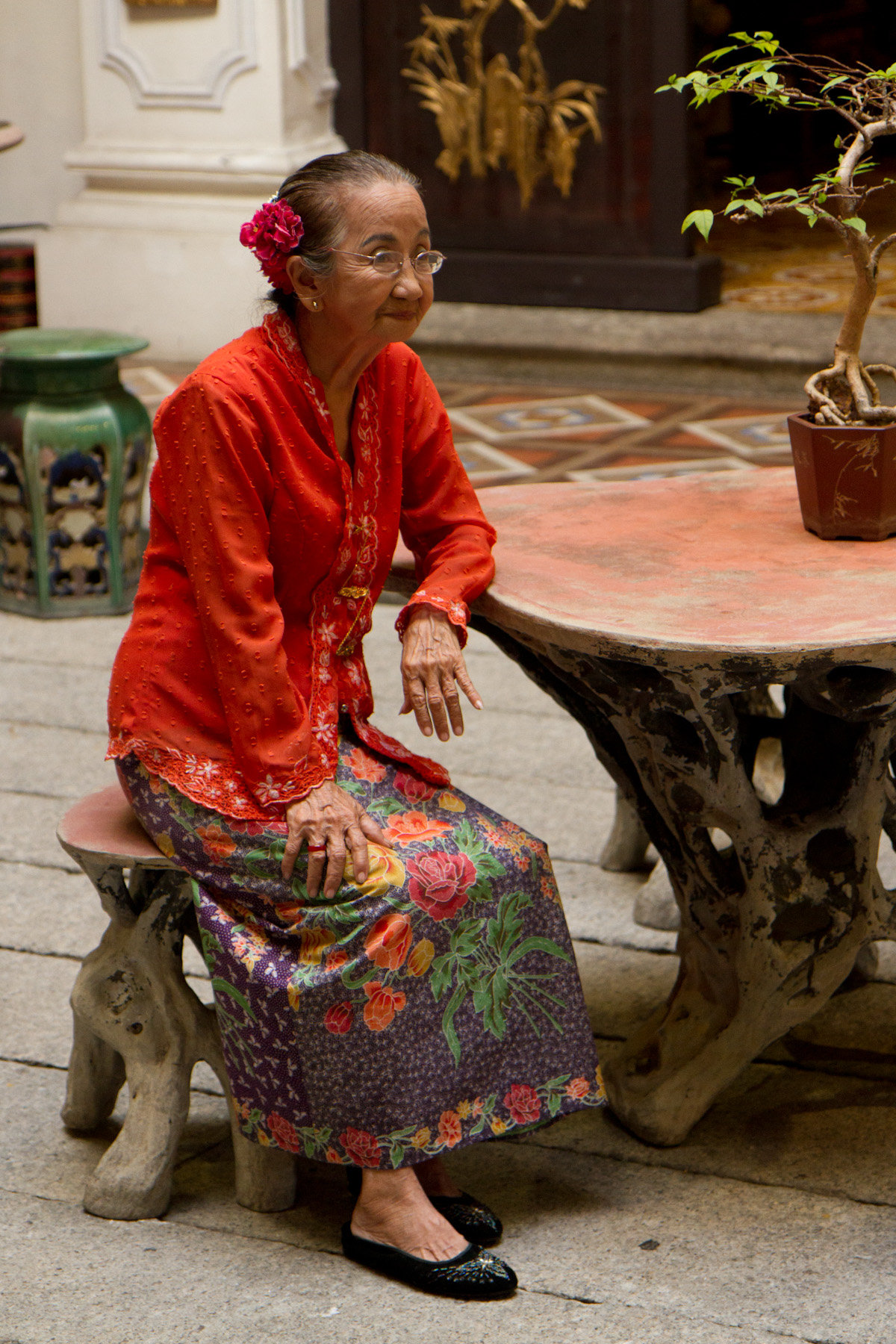
Peranakan means “descendants from a union between a local and a foreigner”; the men are called “baba” and the women, “nyonya”.
The first documented Sino-Malay marriage is the royal romance between the Chinese Princess Hang Li Po and Sultan Mansur Shah of Melaka in 1458.
The Chinese merchants and traders arriving in the fifteenth century took their wives from these earlier Sino-Malay descendants.
The union of Chinese and Malay created a distinct and exclusive lifestyle. Unique speech, culture, customs, cuisine, and fashion evolved.
These Peranakans spoke Patois Malay in Melaka and Baba Hokkien (Hokkien with a spattering of Malay words) in Penang.
They generally followed Chinese customs and religious practices, although the ladies might have indulged in Malay superstitions and beliefs.
The Peranakan cuisine (which survives to this day) is a combination of Chinese cooking style infused with Malay and Thai fragrant herb and aromatic spices. The outcome is the unsurpassed and splendid nyonya kuihs and dishes.
The babas wore Chinese jackets while the nyonya women wore the baju panjang; a long tunic blouse over a sarong.
The women wore their hair in an elegant chignon bun, wreathed with a halo of sweet smelling jasmine or tuberose buds and topped with a row of cucuk sanggul hairpins. Peranakan jewellery is a rich blend of Chinese, Malay, and Victorian styles.
The buttonless tunic of the baju panjang and kebaya blouse would have been fastened with kerosang. The older kerosang thoe is an impressive peach shaped brooch followed by twin circlet brooches. Tiers of necklaces were worn over the bodice of the baju panjang, while the feet would be nestled inside a pair of gelang kaki cuff anklets.
Later, the sarong kebaya became fashionable and the nyonya’s silhouette was sheathed in a translucent kebaya blouse with a matching sarong. The kerosang rantey is a trio of identical brooches to fasten the shorter, modern kebaya blouse. A dainty Victorian silver mesh purse and pair of exquisite hand beaded kasut manik slippers completed the enchanting picture.
The Straits Chinese
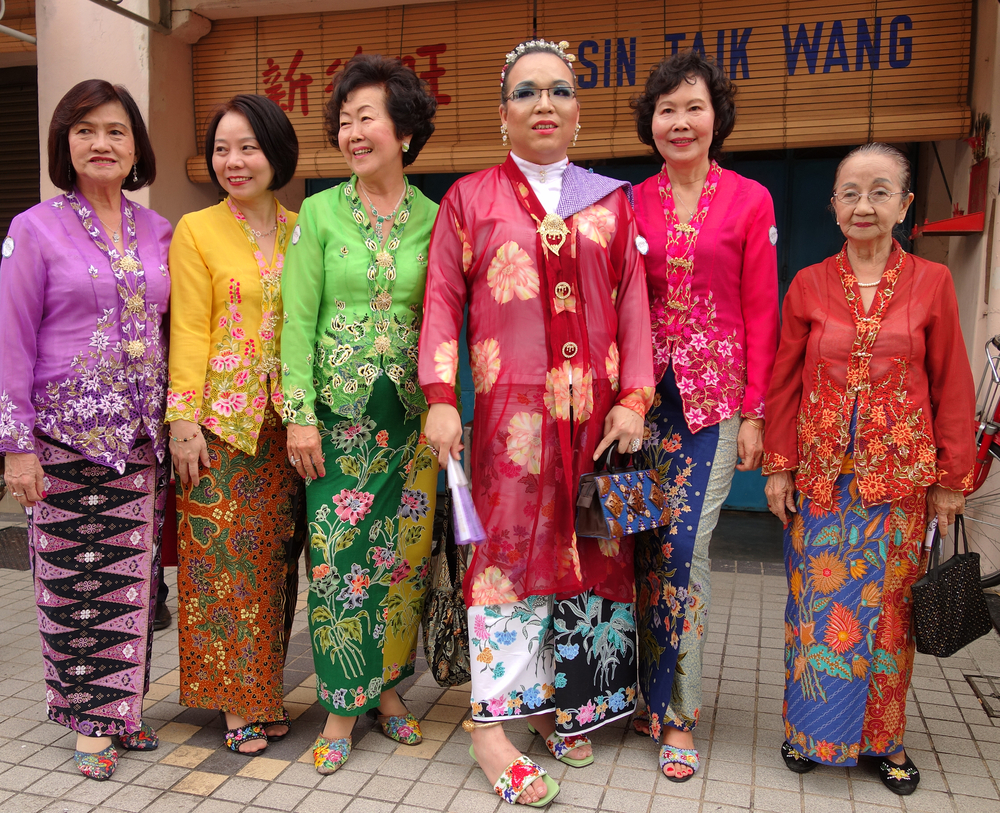
These communities of acculturated, mercantile Chinese set up homes and established their businesses in the 1826 Straits Settlement ports of Penang, Melaka, and Singapore.
In 1867 these three Straits Settlements became Crown Colonies, administered by the Colonial Office in London. Hokkien and Teochew settlers from Kedah, Siam, Sumatra, and Melaka arrived on Prince of Wales Island (now known as Penang) and married established Peranakan families here.
These assimilated Chinese fancied themselves as a refined class of Straits Chinese loyal to the British crown; they were, in their minds, members of the British Empire, and so dressed in Western suits and spoke English. They sent their sons and daughters to English mission schools and, often, to England for further studies, particularly in medicine and law. They also indulged in very English pastimes, such as dancing, listening to big band music, playing cricket, horse riding, and displaying an interest in automobiles and aviation.
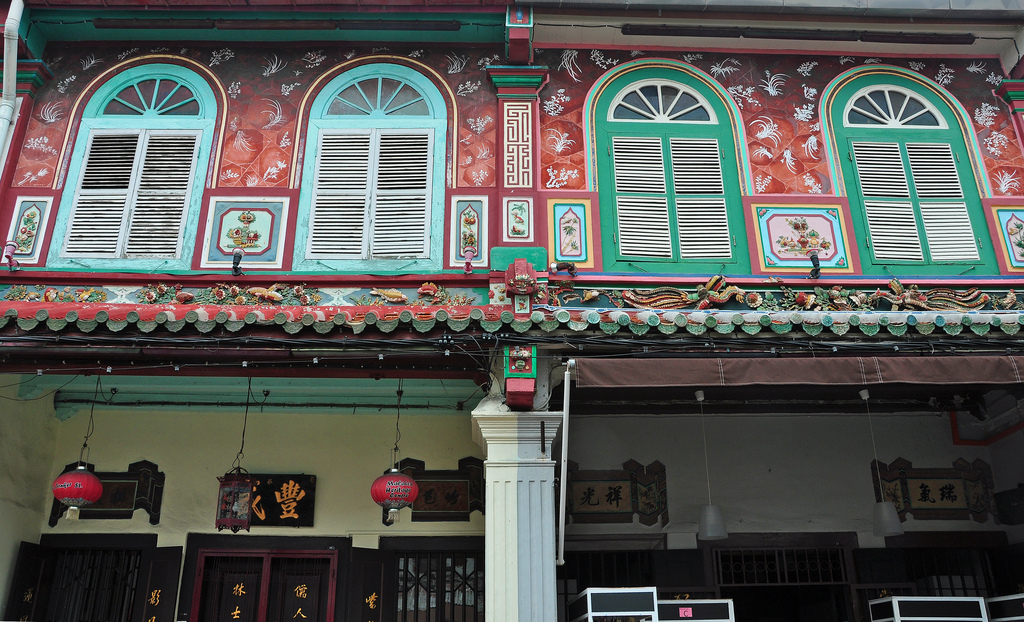
At home, the ladies embroidered, beaded kasut manik slippers, played cherki (a card game), chewed sireh (betel nut), and smoked tobacco in between gossiping and cooking. The ladies’ parlour at the Pinang Peranakan Mansion has a table ready for a game of cherki, and the sunlight that streams in through the “hundred-leafed” shutter windows would have allowed for embroidery, while a daybed would have been sat on or used for the occasional afternoon siesta.
Art and Architecture
The Straits Chinese Eclectic architecture, like the occupants of the houses, was a version of the Sino European influence of the era. Sino European Straits Eclectic terrace homes that can still be seen in Penang are fronted by the goh kha kee (five-foot way), which provided shade from the sun and rain, and a space to play or sit and fan oneself watching the world go by.
The Pinang Peranakan Mansion
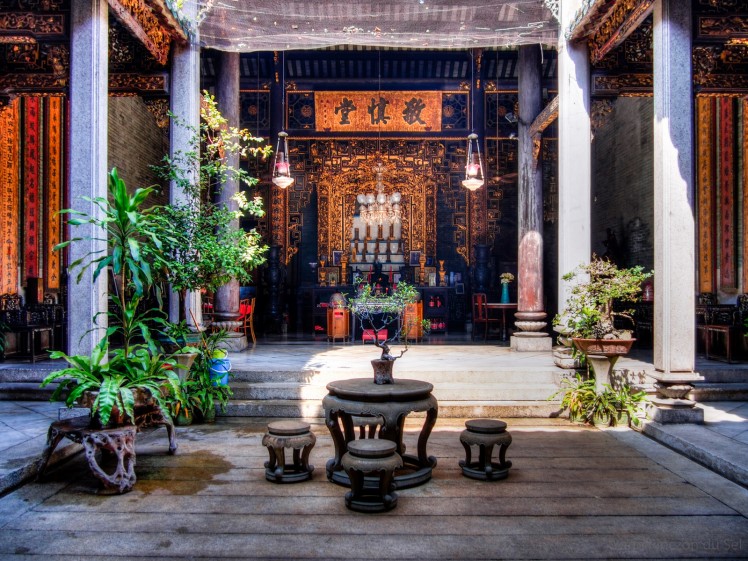
The wealthy Peranakans loved the comfort and grandeur of large houses, especially if were within considerable estates. One surviving example in a town setting is the Pinang Peranakan Mansion, where visitors can get an idea of the gracious lifestyle of the Peranakan people in days gone by. Before the days of the air-conditioning we all take for granted, interiors had to be cooled by air flowing through air wells and courtyards. Gilded lattice screens also provided a measure of privacy while allowing air to circulate through the house.
Certain interior features hint at the desire to be associated with the British Empire: in the main courtyard, Scottish ironwork balustrades trimmed with Prince of Wales plumes march up the timber stairs, and the stately MacFarlane of Glasgow pillars stand proud. Minton tiles from Stoke-on-Trent merrily tessellate the floors.
In the main hall, mother-of-pearl furniture sits ceremonious and dignified, flanked by monumental Venetian glass mirrors, while the English dresser holds Victorian bell jars and German bisque dolls. A th’ng tok (long table) is set up on the second hall to seat all the extended family on happy festive days.
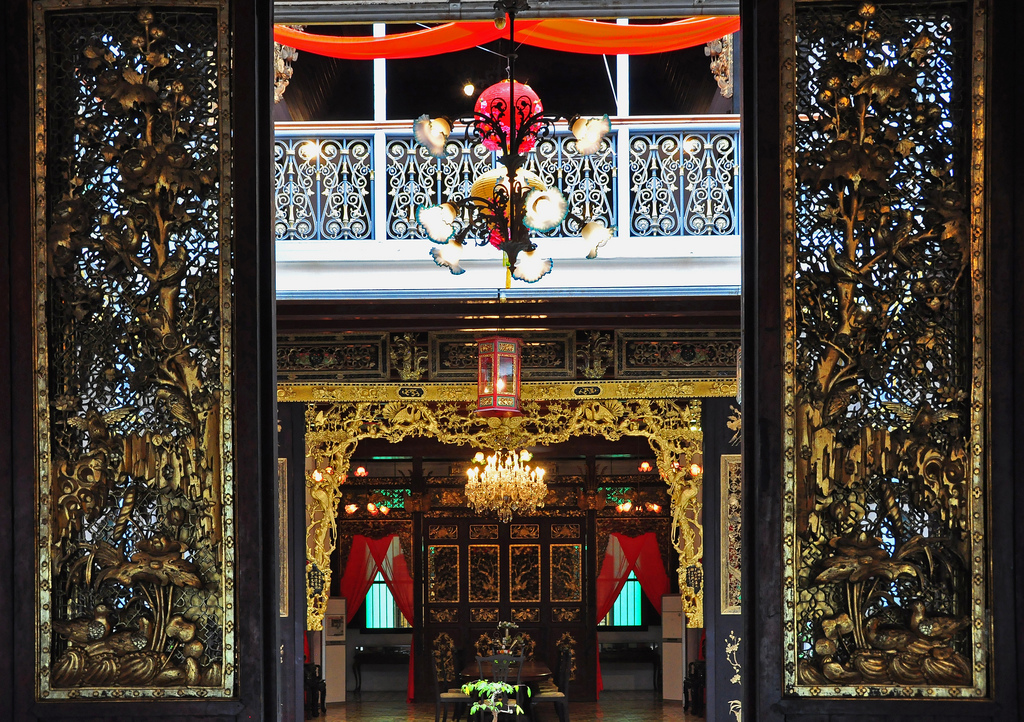
The kitchen is a mélange of utensils and yet another example of the cross-cultured origins of the Peranakans. Utensils range from batu geling (stone pestle and mortar) to a Czechoslovakian enameled tiffin, and lacquered sia nah Chinese baskets sit near the Burmese red lacquer wares. Malay rattan nyiru (winnowing trays) sit beside European white blancmange porcelain molds, and there is a water filter from England.
The forgotten story of the Straits Chinese is brought to life at the Pinang Peranakan Mansion. The stories of Peranakan past waft in the courtyard, smile from the faded photographs, and echo in the tiles, and a visit helps bring the majestic and resplendent, opulent and intriguing Straits Chinese history to life.
Lillian Tong is Museum Director at the Pinang Peranakan Mansion and an author, and her book on jewellery of the Straits Chinese was published in 2012.
———————————————————————————————————
Pinang Peranakan Mansion
29 Church Street
Penang10200
Tel: 04. 264 2929
Fax: 04.264 1929
Open daily 9.30 am to 5 pm.
Source: Penang International August-September 2012
This article was last updated in March 2016.
Read more:
- Discover Organic and Natural Food in Penang
- A Brief History on Francis Light and Penang
- Lunch with Frederick Kho, the New Chef at the Golden Sands Resort in Penang



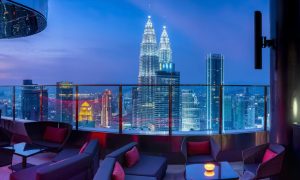

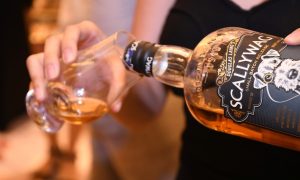





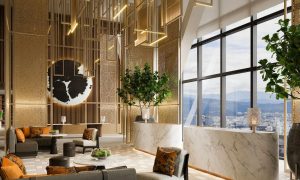

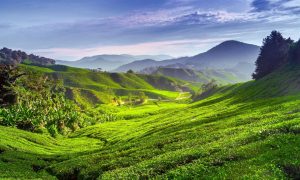



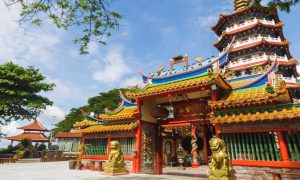



Chen You Yi
Beautiful!